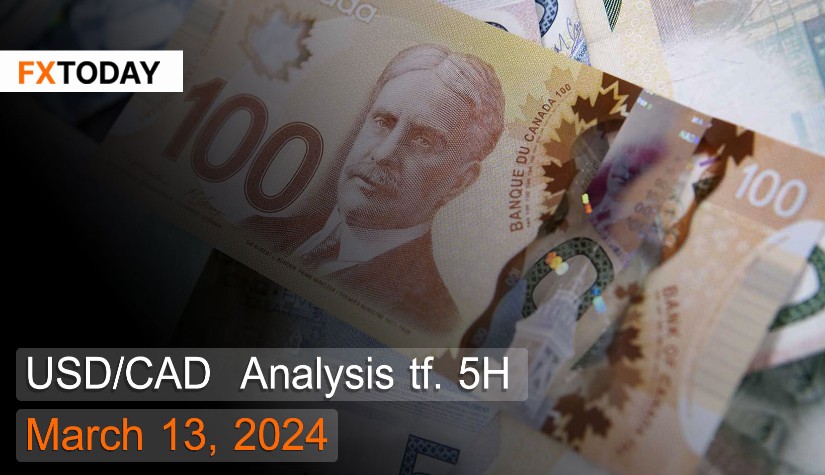The Bank of Canada has decided to maintain the interest rate at the same level.
The Canadian dollar weakened due to pressure from the strengthening US dollar. Investors expect the Fed to keep the interest rate unchanged at the next meeting, with the first rate cut expected in June after inflation rates were higher than anticipated, with the core inflation rate decreasing to 3.8% from 3.9%, but still higher than the forecast of 3.7%.
The Bank of Canada kept the interest rate at 5% in its latest meeting due to concerns about inflation trends. The central bank also pledged to maintain a tight monetary policy until sustained signs of easing core inflation are seen. Policymakers anticipate that inflation will remain close to 3% in the first half of this year before gradually decreasing. Additionally, the bank noted that GDP growth remains weak and below potential, while job creation is increasing at a slower pace, which may prompt the bank to cut interest rates faster than expected.
The unemployment rate in Canada increased to 5.8% in February, up from 5.7%, with the number of unemployed rising by 35,800 to 1,260,400. Meanwhile, there was a net increase of 42,000 jobs in the Canadian economy after a similar increase in January. Job gains amounted to 40,700 in February, up from 37,300 in January, with slight increases in several industries, particularly the service sector.
Canada's trade surplus reached 0.5 billion Canadian dollars in January, higher than market expectations of a 0.1 billion surplus, mainly due to a rapid decline in imports while exports decreased slightly.
Imports decreased by 3.8% to 61.8 billion Canadian dollars, with declines in 7 out of 11 categories, particularly in consumer goods which decreased by 7.1%. This was mainly due to decreased imports of pharmaceutical products by over 19% and unfinished gold and other metals by over 33%. Exports decreased by 1.7% to 62.3 billion Canadian dollars, marking the third consecutive monthly decline. The largest decrease in exports was in aircraft and related equipment, followed by exports of non-metallic minerals and alloys, mostly nickel and nickel alloys in unfinished form.
Techical analysis data (5H)
Resistance: 1.3499, 1.3506, 1.3513
Source: Investing.com
Buy/Long 1: If the price touches support in the price range of 1.3478 - 1.3485 but cannot break the support at 1.3485, you may set a TP at approximately 1.3506 and SL at around 1.347 or according to your acceptable risk.
Buy/Long 2: If the price breaks the resistance in the price range of 1.3499 - 1.3506, you may set a TP at approximately 1.3513 and SL at around 1.3478 or according to your acceptable risk.
Sell/Short 1: If the price touches resistance in the price range of 1.3499 - 1.3506 but cannot break the resistance at 1.3499, you may set a TP at approximately 1.3478 and SL at around 1.3513 or according to your acceptable risk.
Sell/Short 2: If the price breaks the support in the price range of 1.3478 - 1.3485, you may set a TP at approximately 1.347 and SL at around 1.3506 or according to your acceptable risk.
Pivot point March 13, 2024 07:47 PM. GMT+7
|
Name
|
S3
|
S2
|
S1
|
Pivot Points
|
R1
|
R2
|
R3
|
| Classic | 1.347 | 1.3478 | 1.3485 | 1.3492 | 1.3499 | 1.3506 | 1.3513 |
| Fibonacci | 1.3478 | 1.3483 | 1.3486 | 1.3492 | 1.3498 | 1.3501 | 1.3506 |
| Camarilla | 1.3487 | 1.3488 | 1.349 | 1.3492 | 1.3492 | 1.3494 | 1.3495 |
| Woodie's | 1.347 | 1.3478 | 1.3485 | 1.3492 | 1.3499 | 1.3506 | 1.3513 |
| DeMark's | - | - | 1.3481 | 1.349 | 1.3495 | - | - |
















